Speak To A India Expert Today
and start planning your tailor-made holiday

Nathan
Travel Expert

Can't decide where to go? Why not peruse some of our most popular destinations for inspiration then give us a call!

A diverse land brimming with superb safaris, pristine sandy beaches, towering snow-capped peaks and tropical underwater worlds is just waiting to welcome you

Australia offers vibrant cities, diverse landscapes, and iconic wonders like the Great Barrier Reef. New Zealand adds dramatic scenery, Maori culture, and relaxed charm. Together, they promise nature, adventure, culture, and warm hospitality.

If you're dreaming of an island getaway, look no further than the Caribbean with its gorgeous soft sand beaches and lively, diverse cultures.

Head to the amazing destination that is Central America, full of the knowledge of ancient civilizations, incredible mountains, and beautiful beaches.

Discover vibrant cultures, pristine beaches, and tantalizing flavours in the captivating travel haven that is East and Southeast Asia

Embark on a journey through the vibrant tapestry of India, Sri Lanka, and Bhutan—where ancient temples, lush tea plantations, and soaring Himalayan peaks promise unforgettable moments at every turn.

Picture yourself basking on sun-kissed beaches, sipping tropical cocktails beneath swaying palms —where crystal-clear lagoons and luxurious resorts cater to your every desire.

Experience world-class hospitality, mouthwatering cuisines, and the region’s deep-rooted cultural traditions for an unforgettable Middle East adventure.

Venture to the ends of the Earth and behold the icy majesty of polar landscapes. Discover pristine solitude, exhilarating expeditions, and breathtaking views that promise a memorable encounter with nature at its most dramatic

Journey into the heart of South America, where the rhythmic pulse of its vibrant cities meets the majesty of the Amazon rainforest and the timeless wonder of ancient civilizations.

The South Pacific is a paradise of turquoise waters, white-sand beaches, and vibrant island cultures. From adventure and natural beauty to pure relaxation, each island offers its own unique charm and welcome.

From the soaring plains of the Southwestern USA to the stunning landscapes of the expanses of Canada, visit some of the most impressive scenery in the world

If you are looking for a trip to knock iconic locations off your bucket list, check out our buck list recommendations

From the graceful stride of giraffes at sunrise to the echoing roars of lions beneath starlit skies, each of our safaris promises an unforgettable dance with nature.


Our family holidays are a perfect opportunity to create lasting memories, whether exploring new destinations or simply enjoying quality time together. From adventure-filled escapes to relaxing beach retreats, they offer a chance to reconnect and unwind away from daily routines.

Our luxury holidays offer the finest experiences, from exclusive resorts and private villas to tailor-made adventures with impeccable service.

For those seeking adventure beyond the usual tourist trails, our off-the-beaten-track trips take you to some of the world’s most remote and untouched destinations, where authentic cultural encounters and breathtaking landscapes await. Let us craft your unique journeys that few travellers ever experience.

For the ultimate beach escape, we offer luxury holidays to some of the world’s most stunning coastal destinations, from the white-sand shores of Antigua to the turquoise waters of Zanzibar.

For those who crave excitement and exploration, our adventure holidays take you to some of the world’s most thrilling destinations, whether trekking through Patagonia, summiting Mount Kenya, or kayaking past icebergs in Antarctica.

Interested in something a bit more focused? How about a horse-riding holiday through Argentina? Or a photography safari? Look through our Special Interest holiday selection for inspiration

Our wildlife holidays invite you to step into unique ecosystems and experience amazing animal encounters. Whether spotting majestic tigers in the jungles of India or marvelling at polar bears in the Arctic, each trip promises awe-inspiring moments steeped in the magic of nature.

Our small group tours offer the perfect balance of expert-guided exploration and personal experience, taking you to incredible destinations with like-minded travellers. Whether it's a wildlife safari in Botswana, a cultural journey through Vietnam, or a chef-led expedition through India, our carefully curated itineraries ensure an intimate, enriching, and hassle-free experience.

Sustainability travel is at the core of what we do and a guiding principle in every choice we make as a business. Let us help you make sustainable travel choices

Read about what we do to make a difference

One of the most important parts of our commitment to responsible travel is protecting our clients, and it is a part that we take extremely seriously.

Not sure what's best for which time of year? Check out our expert-written guides

Looking for some expertise on your destination? Have a look through our selection of guides and articles written by our destination experts

Looking for more inspiration? Read from our range of hundreds of articles from our travel specialists, local guides, and personal travel tales.

Our mission is to make every holiday special. We will do this whilst specifically aiming to minimise the environmental impact of our activity and maximise our opportunity to influence others to do the same.

One of the first things that pop into people’s heads when they think of India is the Bengal tiger. This big cat, distinctive with its orange and black striped coat, is iconic to the country, and something that many travellers want to see whilst on holiday out here. And for good reason. Whilst most people have seen tigers in zoos, you can't compare seeing one in captivity to coming across one in the wild. Poaching and loss of habitat has caused this beautiful creature to become endangered, with just 2,500 wild Bengal tigers left. However, there are still a few areas in India that are good places to go in order to discover these creatures in the wild.
Here are some of our favourites:
Bandhavgarh National Park, located in Central India, has the highest density of Bengal tigers in the country. The National Park is forested, which enables visitors to have a real Indian jungle experience. Other animals that may be seen include jackals, nilgai (the largest species of Asian antelope), wild boar and chital.
When to Visit?
The park is only open for part of the year, during mornings and afternoons, between the 15th October and 30th June. The best times to go on a jeep safari in Bandhavgarh tends to be early morning (dawn - 10 am) and late afternoon (4 pm until the evening), as this is when animals are the most active. The most popular months are between October and March during India's winter, when temperatures are more pleasant.
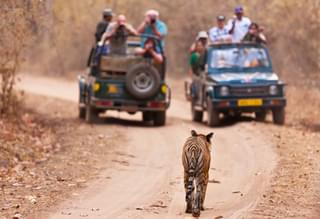
Ranthambore National Park is located in the Rajasthan region and provides a good chance of witnessing Bengal tigers during daylight hours. The national park is quite hilly, and safaris can take place in either a canter or a jeep (we recommend the latter). If you're doing the Golden Triangle trip then a side visit to Ranthambore can be easily accommodated. If you have time, it's a must-see! Ranthambore is also dotted with ruins, such as Ranthambore Fort, reminding visitors of times gone by and meaning that the National park offers a brilliant blend of both nature and history.
When to Visit?
The park is open from the beginning of October to the end of June, and the opening hours may vary, again depending on the time of year.
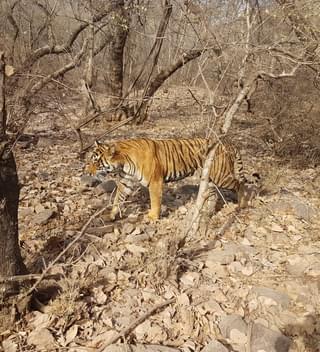
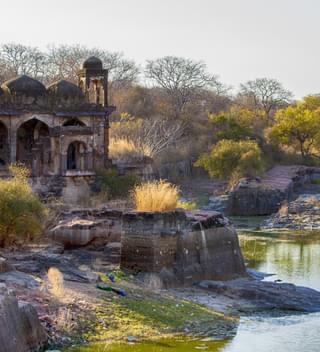
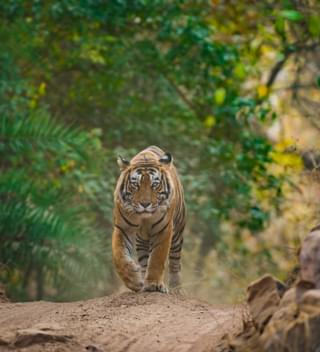
Located in Central India, and now being called one of the world's best wildlife areas, Kanha Tiger Reserve contains both jungle and open grasslands, and gave Rudyard Kipling the inspiration for his 'Jungle Book'. Open jeeps are the recommended form of travel when exploring the reserve, although elephant safaris are also available.
When to Visit?
Kanha is open from 16th October to 1st of July with varying daily opening times. The reserve is always closed on Wednesday afternoons and during the Holi festival.
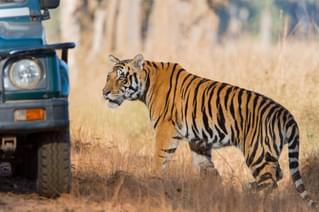
Both the largest and the oldest national park in the Maharashtra area, Tadoba-Andhari Tiger Reserve contains forests, lakes, valleys and meadows and has quite a high density of tigers. In this reserve, tigers are best seen from open top jeeps, along with wild dogs, sloth bears and many more species.
When to Visit?
The reserve is closed from 1st of July to the 15th October and daily opening times vary. Visitors to the area should note that the reserve is always closed on Tuesdays. The best months to see tigers are March, April and May.
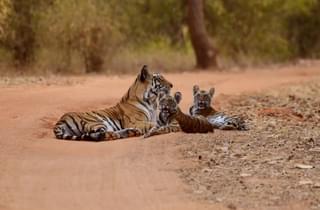
In the foothills of the Himalayas, India's oldest national park comprises various habitat types including hills, riverine belts, marshes and grasslands. Home to a large number of Bengal tigers and other rare animals such as fish eating crocodiles and the smooth coated otter, this national park is popular amongst wildlife lovers. The Jim Corbett National Park is also one of the only parks in India that permits visitors to say overnight within the boundaries.
When to Visit?
Apart from the Jhirna safari zone, which is open the entire year, all areas of the national park are closed between 15th October to the 30th June. The daily opening hours vary.

Kaziranga National Park
in 2006, Kaziranga National Park was declared as a tiger reserve due to an increase in numbers of the Bengal tiger. As well as sheltering tigers, the national park is also a haven to the one horned Indian Rhino, another threatened species. Kaziranga contains approximately two thirds of this rhino's worldwide population, with more than 2200 individuals living within the boundaries of the national park. Off the beaten track, Kaziranga is situated in the North East of India, and contains vast swathes of grassland.
When to Visit?
The park is closed from the 1st of June to the 1st October. No matter the time of year, the daily opening hours remain the same with morning and afternoon game drives available. The best time to visit is in the winter months, between December and February.
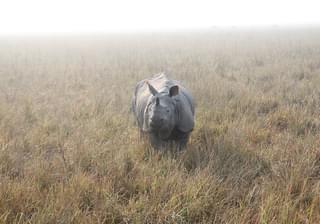
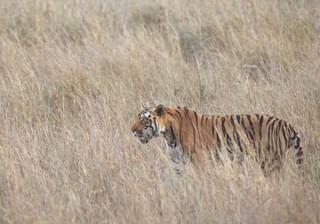
The best way to see tigers in India is by an organised jeep safari with a guide. Self driving isn't usually an option in these national parks, and the guides will know where to go for the best chances of spotting tigers. Many parks have good accommodation options so you can either incorporate a visit as a day trip on your India itinerary, or spend a little longer if you want to see as many of these majestic creatures as possible.
and start planning your tailor-made holiday

Travel Expert
What can I say….my son and myself had the most wonderful time in Kenya thanks to the first-class itinerary that Ben and Louise put together for us. We spoke with Ben many times to ensure he ‘got it right’. This was our 2nd visit to Kenya, and it certainly lived up to our expectations and memories. Nothing was too much trouble for all the staff; we cannot have been looked after any better. I would highly recommend Far and Wild; they are so knowledgeable and have personally visited the lodges and areas. We are already planning another visit, and we cannot wait.
I have just returned from the most amazing trip to Tanzania, booked with Far & Wild. Everything went so smoothly from the first time I spoke with them. The planning was great, the itinerary was perfect for us, and the lodges were amazing. We spent 10 nights with an amazing guide, travelling through Northern Tanzania and even got to see the migration, which was a lifetime ambition of mine. This wasn't our first safari, so we were nervous as to how it would compare, but it was spot on. I will certainly be using them again to book our next trip....we're thinking of a relaxing beach stay next time to get over the excitement of safari!
Just back from another amazing F&W organised trip to Namibia with the family (8 adults). Having been there before, Alistair tailored our trip to include our favourite locations and added a new one for us, which we loved.The quality of accommodation and guiding, activities, food and drinks was exceptional throughout. It was good value for the level of luxury we had.
We had a wonderful trip to São Tomé and Príncipe - a small island nation in the Gulf of Guinea with paradise (almost empty) beaches and jungle forest. It was all well organised by Far and Wild and we stayed at a great combination of different types of resorts/hotels. We really recommend this for those who want to experience a pristine destination with few other tourists and friendly and welcoming people. The islands also feel very safe. At Principe, there are no dangerous animals, snakes or whatever, and it was great to be able to hike in the jungle without being very conscious of where to put your hands and feet. Go before everyone else does!
Back home again, basking in the joys of a superb safari. Every aspect you arranged for us, including linking up with Mack Air and Wild Horizons locally to transport us. The choice of camps was ideally situated, comfortable, in good surroundings, and with excellent wildlife on the doorstep and throughout the wider country. The service staff in each looked after us very well, catering was excellent, and the game guides were professional, knowledgeable and helpful. You made us happy, and we recommend you to similar safari enthusiasts with confidence.
Far and Wild went above and beyond to make sure my trip to Zambia was special. I would definitely recommend them and their services to anyone wanting to travel to Africa.
Lovely holiday at the amazing Almanara on Galu beach, a beach like no other. Far and Wild excelled themselves from beginning to end of our holiday in beautiful Kenya.... What a country!,
Wow! These guys are amazing. Can’t recommend them highly enough. Friendly AND efficient! Sorted out our trip (last minute and lots of different family member needs, sorry!) in record time and everything worked like clockwork. Trip of a lifetime to the Masai Mara. Will be back (and use F&W again!)!
It was a dreamy holiday on the Kenyan Coast - Far and Wild, their efficiency and professionalism allowed us to relax and be the happiest family alive !! We cannot fault them, their care and understanding of what we wanted from a holiday ensured we had the most memorable trip. We will be booking with them again for sure!
Get travel tips directly to your inbox every week
Give us a call on 0203 111 1315 or fill in the form below and we’ll be in touch.


